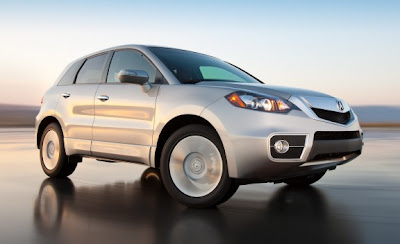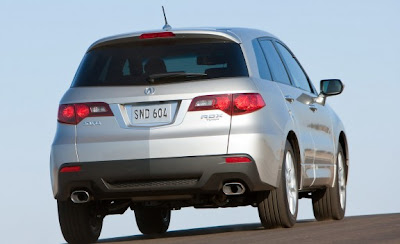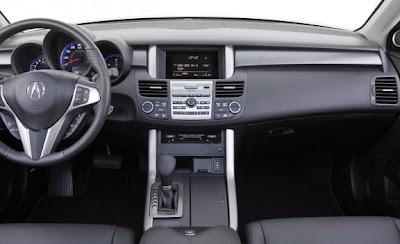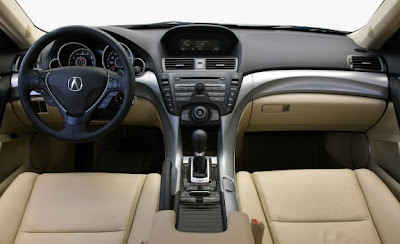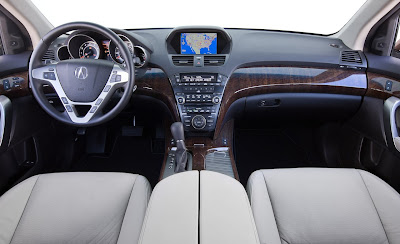Review: 2010 Range Rover Sport Supercharged
Despite enduring a string of financial hardships, Land Rover still enjoys one of the clearest and most robust brand identities in the automotive kingdom. The English automaker has held the same core values since the company's first off-roader was created by Maurice Wilks in 1948. Wilks reportedly designed the first Land Rover to emulate a Jeep he had driven, and the first Land Rover prototype actually utilized a chassis borrowed from that legendary American off-roader. And much like Jeep, when you think of Land Rover, the words rugged, purpose-built, and capable are sure to come to mind, but the two storied marques part company when it comes to luxury amenities. England's four-wheeling pride and joy can be found in places like Africa, the Middle East, Australia's Outback and as well as the ritziest precincts of Beverly Hills and Monte Carlo.
While the core identity of Land Rover hasn't deviated much over the years, its product lineup has grown substantially. After Ford purchased Land Rover from BMW in 2000, the brand added the supremely capable LR4 and Range Rover Sport to a struggling lineup. The Sport traces its looks and name to the top-end Range Rover model, but its underpinnings are actually based on the LR4, with an integrated bodyframe semi-monocoque construction for a combination of rough and ready off-roading and good noise isolation characteristics.
The sportiest of Range Rovers has been a solid entry in the luxury mountain climbing segment for a half-decade, but the folks at Land Rover have given the Sport a very thorough update for 2010 to help it live up to fast and flashy new competitors like the Porsche Cayenne and BMW's X5/X6 M twins. We were able to get our hands on a new 2010 Range Rover Sport with the company's new Jaguar-derived supercharged 5.0-liter V8 to see if it's as accomplished on paved streets as it is off-road.
When we say that the Range Rover Sport has been updated for 2010, we mean thoroughly overhauled. It may not look all that different on the outside, but among the upgrades for 2010 are a pair of more powerful engines, a new six-speed automatic transmission and comprehensive – if subtle – alterations to the accommodations. Exterior changes include new, impressive-looking LED-encrusted headlights and taillights that give the Sport a more commanding presence on the road. Other than the new lights, though, the Range Rover Sport looks nearly identical to the model it replaces, which is just fine with us. Range Rover's classic design remains the black tuxedo of the luxury SUV set, with an intrinsically tough-looking stance and manly lines throughout. Our completely loaded Bournville (fancy word for really dark brown) Range Rover Sport carried an MSRP of $82,345 with standard navigation and moonroof, along with every option box checked, including rear-seat DVD, upgraded 20-inch wheels and HD Radio. A hefty price tag to be sure, but is it worth it?
On the inside, we'd say yes... for the most part. Land Rover started with the familial cockpit layout that's become a staple of the marque, along with upgraded materials and a host technological improvements. High-grade leather is present just about anywhere your hand falls and the use of matte finish woods is among the best we've ever seen. Seemingly everybody we transported during our week with the vehicle wanted to touch the trim for themselves, as evidenced by the multitude of fingerprints on the leathery dash. We can't blame anyone for getting a case of the fondles (*ahem*) when sitting in the front seat of the Land Rover, as we can't recall a vehicle with better materials at this (lofty) price point. Land Rover has even swapped out the seats for 2010, and the new, deeper thrones have ample electronic-controlled bolstering to keep your butt planted during aggressive driving.
One of the things we didn't like about past Land Rover interiors was their labyrinthine maze of buttons splayed across the center console. We apparently weren't alone in disliking the button-palooza, as Tata Motors' luxury SUV outfit has cut 50 percent of its overall press-points for 2010, and the remaining switchgear is easy-to-reach and a snap to navigate. And speaking of navigation, our Range Rover Sport tester came standard with a seven-inch touchscreen nav/infotainment unit, a no-brainer for an adventure-ready $82,000 luxury SUV. We'd love to tell you the nav was a hoot to use, but unfortunately, that was far from the case.
For starters, the screen is smaller than the one you can find in other vehicles at half the price, and its slight stature is amplified by the fact that the Range Rover control array is the Spruce Goose of center stacks. We'd be able to overlook this one problem if the system was responsive and easy to use. Again, not so much. Every time we touched the screen, there was a persistent latency between contact and execution of the command. Our fully-loaded tester also came with LR's optional rear-seat entertainment package. When we saw a pair of massive LCD screens embedded into the back of the front seat headrests, we immediately thought the kids were in for a treat. What we didn't anticipate was how big of a headache it was going to be to pop in a DVD for the kids to enjoy while we have our way with the 510 horsepower manwagon.
When it came time to take the family for a ride, we loaded up the kids along with a copy of The Pink Panther. After everyone piled into the gorgeously appointed SUV, Dad opened the glove box to insert the DVD. Nothing there. Maybe the CD slot in the dash doubles as a DVD reader? Nope. Oh, then it must be hiding beneath the center armrest. Again, no. Luckily, we had a 13 year-old in the back seat. Anything back there? Under the seat? Nope. We checked the manual (no mention) and we looked in the trunk. Nothing. After wasting a half hour of our lives, we made a call to editor Paukert for some council. Paukert reminded us that older Range Rovers used to have a small, obscure access panel in the boot above the passenger-side rear tire well.
We ventured outside one more time to take a look, and wouldn't you know it, there was a tiny access panel staring us right in the face. We'd seen the panel before, but assumed that it was just too small to be anything but a fuse box. Unfortunately, we were wrong. Nestled into the panel ever so tightly was a six-DVD changer buried deep into a dark, narrow sarcophagus. After a couple of minutes of jostling, we were able to pry out a flimsy cartridge. The Pink Panther was inserted and the kids re-entered the vehicle. We then fooled around with the LCD interface for five minutes before realizing that we had to labor through the nav interface to turn on each headrest-mounted LCD before playing the DVD. Now we know what it feels like to be Santa Claus at a Philadelphia Eagles game. Needless to say, we subsequently watched the same movie every time the family was in the vehicle, and we're pretty sure the disc was still in the boot when it was picked up. And to think that the rear-seat entertainment package is the most expensive Range Rover Sport option at $2,500. Ouch. Fortunately, the Range Rover Sport was much more enjoyable once we actually started driving.
Getting behind the wheel of a Range Rover Sport is a bit like entering a Brinks truck, albeit a very nicely appointed one. It's hard not to feel invincible from the moment you close the doors with a confidence-inspiring thud and stare out the front window only to revel in your commanding seating position. And those new seats? They're a fitting reward for the driver who plops down 82-large. The chairs are Lazy Boy-comfy but with very respectable bolstering for a 5,900 pound utility vehicle. And as we would soon find out, said bolstering is very welcome given the Range Rover Sport's extraordinarily powerful drivetrain.
The biggest aspect of the Sport's refresh is a pair of completely new powertrains, and we were lucky enough to get the direct injected, supercharged 5.0-liter mill under the bonnet of our tester. With 510 horsepower and 461 pound-feet of thrust, our tester felt more like a supersized sportwagon than a massive SUV. Land Rover claims a 0-60 mph time of 5.9 seconds, and after one stab at the throttle, we can attest to the accuracy of that time. The Eaton-sourced twin-vortex supercharger is 16 percent more efficient than the booster it replaces, giving the RR Sport another 135 ponies (versus the naturally aspirated model) while still passing ULEV2 emissions regulations. The new engines figure to be more reliable, too, and they carry 15,000-mile service intervals, effectively doubling the amount of regal mud bogging between dealer visits. Land Rover went to ZF for its newest transmission, and the HP28 six-speed unit is a very smooth operator. Paddle-shifters were on-hand, but we had no desire to use them more than once thanks to the engine's surplus of torque.
And just because the RR Sport weighs in at nearly three tons doesn't mean that Land Rover has built a sloppy cornerer. LR hasn't obliterated any longstanding laws of physics, but by adding adaptive vehicle dynamics, it's helped bend some rules. The Landie's DampTronic valve tech monitors and optimizes damper pressure 500 times per second, helping even first-time drivers feel confident and controlled behind the wheel. Steering feel has also been improved by stiffening the front suspension's lower arm bushings.
While we certainly couldn't verify Land Rover's claim of 500x per second damping pressure monitoring, we can tell you that the sporty Range Rover feels very surefooted in a wide variety of driving conditions and during aggressive driving. We were pleasantly surprised at how flat this beast is under hard cornering – it's like Land Rover built a tank that was specifically designed for slaloms. Actually, tank-like is a great way to describe the feeling we got when behind the wheel, but not in a laboring, trench warfare way. More like, this is as close as the English could come to duplicating the Abrams Tank while still retaining the driving dynamics of a vehicle much smaller than it really is. The steering is nicely weighted and has some level of feedback, though it won't be confused with a Porsche Cayenne any time soon. The Range Rover's five spoke, 20-inch wheels fill out the wells just fine, and the 14.2-inch ventilated rotors up front and 13.8-inch stoppers at the rear provide enough fade-free stopping power to keep your Land Rover from dancing with bumpers or boulders.
The Land Rover Sport may have the heart of an on-road athlete, but it is constructed to excel off-road even more than it does on pavement. Every Range Rover Sport comes with Land Rover's Terrain Response system; a dial with six settings for varying driving conditions. The driver can select from settings including general driving, sand (new for 2010), rock crawl, mud and ruts, and grass/gravel/snow. The other all-new setting, which is only available on the supercharged model, is Dynamic Program, which tightens steering and body control while also reconfiguring the stability control system for snappier responses. Select this option and Land Rover promises that you'll enjoy a more athletic on-road driving experience. We found Dynamic Program to have improved steering and throttle response, but a single performance-inspired setting does not a 3 Series-fighter make. It does, however, result in a confident-handling luxury SUV. Our favorite setting was the winter detent, because Southeast Michigan received about two inches of snow right when we took delivery of our tester. While the settings didn't cut out sliding and slipping altogether, it did a fantastic job of keeping us on the straight and narrow.
Since our test model had every available option, we were also able to test Land Rover's adaptive cruise control. While we're not huge fans of most adaptive cruise systems, we were very happy that Land Rover has done an excellent job of making the system easy-to-use. If you find yourself slowing down too far from the vehicle in front of you on the highway, simply slick a steering wheel-mounted button to decrease the trailing distance. A five-inch, grayscale LCD located in the gauge cluster shows the driver which setting he or she is using. Keep in mind, though, that unlike some advanced adaptive cruise systems that will bring a vehicle to a complete stop if the radar system senses an object in its direct path, in our experience, Land Rover's system will slow the Sport to about 10 mph. From there, it's up to the driver and those capable brakes to bring the Sport to a complete stop.
On the efficiency front, Land Rover says that the 2010 Sport is more economical than the model it replaces, which is no surprise when considering how thirsty the outgoing model was. Our time with the RR Sport added up to fuel economy of about 13 miles-per-gallon in mixed yet spirited driving. The EPA says you should expect 17 mpg on the highway and 12 mpg in the city, so don't trade in the family Mini just yet.
In the end, it's hard not to love the Range Rover Sport because it remains straightforward in what it promises and diligent in ensuring that those promises are kept. The new model delivers with luxurious appointments and vastly improved performance while honoring a 60-year tradition of off-road capability. Mix in the boxy good looks that come standard on every Gaydon gladiator, and we couldn't help but fall for this Land Rover quite a bit. Okay, so we didn't take our tester on safari, but it did everything we asked of it during our time in the urban jungle. Like us, we suspect that most Range Rover Sport owners won't often take the road less traveled, though we're sure the ability to easily hurdle a cement parking barrier in complete luxury is a fine ability to have should the need ever arise.
[Source: Autoblog]
Rear-drive Hybrid Lexus IS, V10-powered GS F on the way?
It looks like Lexus is planning to go to both extremes on the green-performance continuum. When the next-generation IS appears in a couple of years, it will likely add a hybrid powertrain option. Such a move would be in keeping with Toyota's oft-stated commitment to having hybrid drive available in almost all of its platforms by the end of the decade. The IS hybrid may also spawn a new rear-drive hybrid sports car around the same time. If these IS based hybrids are consistent with the current GS450h they will definitely be biased more towards performance than efficiency, using the hybrid drive to enhance acceleration without consuming more gas.
Meanwhile, the GS – as rumored previously – could be setting its sites on the new BMW M5 and Cadillac CTS-V. Even though only 500 LF-As will be built, the 4.8-liter V10 may find its way into a much-rumored new GS-F model. The GS-F won't arrive until 2013 so it should be based on the next generation sedan. In the LF-A, the V10 has the power to compete with the German and American models but falls short of the Cadillac's torque. If the new M5 gets the uprated 4.4-liter twin-turbo V8 from the X5/X6 M, it would also be way ahead of the Lexus. Unless the Lexus engine gets boosted or the GS looses a lot of weight, this could be the only high-revving sports sedan of the pack left.
[Source: Autocar, Autocar]
Review: 2011 Hyundai Sonata
Imagine, for a moment, that you're forced to invent a new candy with the specific objective of taking a bite out of the market segment comfortably satisfied by M&M's, Skittles and Reese's Pieces. Sounds daunting, right? With that in mind, the all-new 2011 Hyundai Sonata is being placed right back into the middle of the hotly-contested family sedan segment, already occupied by such established players as the Honda Accord, Toyota Camry, Nissan Altima, Ford Fusion and Chevrolet Malibu, to name just a few.
Completely redesigned for 2011, the Sonata is freshly styled and more spacious than its predecessor. It brings a few innovations to the game, including a new direct-injected four-cylinder powerplant mated to a six-speed automatic – yet it has no V6 option. We put a couple hundred miles on the new Sonata in San Diego.
Erase everything you know about yesterday's Sonata. Forget those memories, delete the images. Reformat the hard drive. About the only significant things the all-new 2011 model has in common with its predecessor is the name badge on the decklid (now moved to the other side of the trunk) and the fact that they both burn a liquefied petroleum product and roll to their destination on pneumatic tires.
Now in its sixth-generation, the newest Hyundai dumps its consistent ho-hum styling in favor of what the automaker calls a "fluidic sculpture design." Created by the Hyundai Design Center team in Irvine, California, the sleek new four-door is a fresh face in a segment full of cookie-cutter sedans. Interesting and stylish, the Sonata offers an engaging mix of traditional sedan and four-door coupe rolled into one. Take special note of the chrome strip running from the tail of the headlamps clear to the base of the C-pillar, and the door handles deliberately positioned at different heights to aesthetically complete the bold character lines. The exterior is unique, rather exhilarating, and it looks downright expensive. We like it.
While the styling visually suggests otherwise, the Sonata is among the shorter "mid-size" vehicles within its competitive segment. The 2011 Hyundai Sonata and the Honda Accord are the only two in this class with an EPA "large car" classification – the Camry, Altima, Fusion and Malibu are all considered "mid-size" cars by the agency. Interestingly enough, the Sonata has the most total interior volume in the segment.
The Sonata's cabin continues the same "sculpted" theme as the exterior. Understandably, it debuts as a much more modern (um, futuristic?) looking cockpit. There are plenty of bluish lights, digital displays, buttons and even a hat-tip to Volvo for the humanoid-look climate control display. With knobs and buttons abound, it takes a few minutes to get accustomed to the vehicle's operation. But, after a few hours behind the wheel, it comes naturally. In practice, the human interface works even better than it looks, which is what really counts.
Under the hood is Hyundai's new direct-injected DOHC 2.4-liter GDI four-cylinder. The all-aluminum powerplant, fitted with continuously variable valve timing, is rated at 198 horsepower at 6,300 rpm and 184 pound-feet of torque at 4,250 rpm (the SE model bumps those to 200 horsepower and 186 pound-feet of torque). The Korean automaker offers two different transmission choices. The first is a traditional six-speed manual (M6GF2), the same transmission offered on the Hyundai Tucson. (Hyundai says "only a few percent" of owners will opt for the manual gearbox, so don't expect to see many in showrooms). The other transmission is the automaker's all-new six-speed automatic (A6MF2), also shared with the Tucson. This is Hyundai's first proprietary six-speed automatic (the Genesis and Veracruz use an outsourced Aisin gearbox) that's 26.4 pounds lighter and has 62 fewer parts than its five-speed predecessor. Fitted with a SHIFTRONIC manual shift mode, the SE trim level adds steering wheel-mounted paddle shifters for those Schumacher dreamers.
Unlike last year's model, the 2011 Sonata will not offer a six-cylinder option. Hyundai obviously realizes the Toyota Camry, Honda Accord, Nissan Altima, Ford Fusion and Chevrolet Malibu – the Sonata's primary competitors – are all offered with four- and six-cylinder powerplants. However, the Korean automaker isn't flinching. When asked why the new Sonata doesn't offer a V6 option, John Krafcik, president and CEO of Hyundai Motor America, boldly predicts that "V6 engines are going the way of the dinosaur." (Krafcik even went so far as to predict that no midsize sedans will have a V6 option in 2016 – the year more stringent EPA fuel economy regulations are enacted).
Power-hungry mid-size family sedan buyers shouldn't worry, as Hyundai is expected to introduce a turbocharged variant of the 2.4-liter GDI four-cylinder very soon. When talking about that engine, Krafcik smiles and says the yet-to-be-released turbocharged engine is "very delicious" (his exact words, not ours). It has an "endless reservoir of power... and we are shooting for the same EPA fuel economy as the normally-aspirated variant," he boldly adds.
Sure, a direct-injected four-cylinder is technically advanced and innovative, but it really isn't big news these days. What is big news is fuel economy and this is where the 2011 Hyundai Sonata climbs to the top of the podium. According to official EPA numbers, the Sonata earns 24 miles per gallon city and 35 mpg highway with the manual transmission and 22 mpg city and 35 mpg highway with the automatic. While those impressive efficiency numbers equal its four-cylinder challengers in the city cycle, all fall behind the Sonata in highway testing. When you consider even the strongest competition cannot muster more than 190 horsepower from their four-cylinder offerings, the 2011 Hyundai Sonata doesn't just beat its competition in the fuel economy battle, it frankly slaughters them. More on this later.
Posting big fuel economy numbers isn't easy. Hyundai not only focused its attention on the powertrain and fitted the Sonata with the aforementioned direct injection and efficient six-speed automatic transmission, but it has also added a "smart" alternator that pulls its power primarily when coasting. There is a low friction driveline with a unique bearing design, and low rolling resistance tires on all four corners. The body was sculpted with an aerodynamic design – an impressive drag coefficient of .28 – presenting a sleek profile to the wind. Lastly, the engineers optimized the body structure to save weight.
2011 Hyundai Sonata Limited
Tipping the scales at just 3,199 pounds, the 2011 Sonata is lighter than nearly all of its four-cylinder competition – 70 pounds lighter than the Accord and upwards of 108 pounds lighter than the Camry. It pays off in power-to-weight ratio, with the Sonata again leading the pack as it hauls around just 16.2 pounds-per-horsepower (for comparison, the Camry is 19.6, the Accord is at 18.5 and the Fusion is at 19.1). Don't think the lightened structure compromises safety either – the Insurance Institute for Highway Safety (IIHS) named the 2011 Hyundai Sonata one of its Top Safety Picks for this year.
The new chassis boasts improved body rigidity over the outgoing model, creating a more capable platform for the suspension. Speaking of underpinnings, the 2011 Sonata wears independent MacPherson struts up front and an independent multi-link design in the back. There are stabilizer bars front and rear and the SE trim level gets sport suspension tuning. Disc brakes are fitted on all four corners and tucked inside standard 16-inch wheels (the Limited models wear 17-inch alloys, while the sporty SE models have 18-inch wheels). An electrically-assisted steering rack alters boost based on engine speed (the SE trim level features a "sport" feel) and the Sonata also offers a class-leading turning diameter of just 35.8 feet (the Accord and Fusion add a couple of feet to that – kissing curbs).
Hyundai is offering three trim levels (GLS, SE and Limited) for the 2011 Sonata and several equipment packages. By the time you mix and match the trim levels, transmission and option packages, there are eight different models altogether.
Base price for the standard GLS model starts at just $19,195 (add $720 destination to all pricing), the sporty SE from $22,595, and the top-of-the-line Limited begins at $25,295. All models share the same engine, transmission choices, and full complement of safety equipment. To briefly summarize: The GLS starts with a manual transmission, cloth upholstery, manual seat controls, steel wheels, remote entry and a long list of power convenience equipment. An available "Popular Equipment Package" adds a power driver seat, 16-inch alloy wheels and interior trim upgrades among other things. The SE model starts with the automatic transmission, cloth upholstery, sport suspension, 18-inch alloy wheels and differentiating trim. The Limited models are fitted with leather upholstery, dual-temp climate control, a power-operated sunroof and 17-inch alloy wheels. Navigation with a high-res touch screen is also optional on all trim levels. Hyundai predicts about 60 percent of buyers will opt for the base GLS model, 10 percent will choose the SE, and the remaining 30 percent will step up to the Limited.
Consumers will be happy to hear that every 2011 Hyundai Sonata comes with iPod/USB connections, XM Satellite radio and Bluetooth phone connectivity as standard equipment – items are still optional on some cars costing three times as much. The base audio package feeds 104 watts through a six-speaker system (with AM/FM/XM/CD/MP3). A 360-watt system, adding a subwoofer and a six-disc CD changer, is optional on the GLS and SE and standard on the Limited. Audiophiles who buy the Limited may also upgrade to an even more powerful 400-watt system by Infinity.
We took first pick from more than a dozen brand-new Sonatas lined up outside our hotel, each with a set of keys ready to go. Attempting to satisfy the enthusiast within us, we jumped into a "Venetian Red" SE model first. Your writer's six-foot two-inch frame slid into the driver's seat with plenty of room. In fact, the seat had to be moved forward a bit for comfort (later that afternoon, we jumped into the rear seat behind "ourselves" and discovered that space and legroom was more than adequate). Outward visibility is good, and we didn't find any large blind spots on either side that wasn't solved with a simple mirror adjustment. We did find ourselves wanting some back-up sensors – no camera, just the simple beepers – to let us know where the rear bumper was during backing maneuvers.
Foot brake released and transmission in gear, we pulled out of the hotel. First impressions – the important ones – are that the new four-cylinder powertrain is just fine. Sure, it's no dragster, but it will chirp its front tires pulling away from a corner (would that be the litmus test?). We merged with traffic smoothly and settled down to a sedate cruise as we looked for the road out of town. The in-house six-speed transmission shifted nearly imperceptibly as it conducted the engine delicately through its paces. Power delivery of the 200-hp four is smooth, but the engine sang in a typical four-pot key (read: not so pleasant). The low rolling resistance tires did make a bit of a racket, but it was only evident because wind noise and is surprisingly low, even on the highway.
Hyundai will never claim the Sonata is a four-door sports car. Nevertheless, our burgundy SE sedan held more than its own when pressed into the corners. The steering was nicely weighed, and the vehicle's overall balance was surprisingly good. Nobody at Hyundai could tell us the weight distribution from memory, but the vehicle's overall low mass and suspension tuning made it enjoyable to drive at spirited speeds. We likely pushed the Sonata harder than most owners will during an unexpected emergency maneuver – and lived to talk about it.
Later in the afternoon, we took a higher-end Limited model for a 75-mile spin. Though the steering was slightly less responsive than the SE and the ride was marginally softer, it never put us off – although we admit preference for the sportier model. Funny thing, our wives, girlfriends, in-laws, neighbors and friends would rationally prefer the standard softer suspension for their Sonata family sedan. Not us, we like the SE.
We'd be remiss to not discuss fuel economy, as the Sonata's left a huge impression on us. As mentioned, the EPA rates the automatic models we were driving at 22 mpg city and 35 highway. In usual fashion, we typically take those EPA number and subtract a couple points to get "real world MPG," right? Well, it seems the 2011 Hyundai Sonata is also out to dispel that age-old calculation. In our "real world" driving up and down the hills surrounding San Diego, the on-board computer calculated 37.8 MPG during the morning trip... and we could have easily pushed 40 MPG had we attempted some hypermiling tricks.
Demonstrating the impressive mileage from the new direct-injected four, the Hyundai team hosted a fuel economy contest. Most drivers arrived back at the hotel with fuel economies in the high-30s and more than a handful dropped into the mid-40s. The day before our arrival, two teams topped an amazing 47 mpg and won a nice dinner for their efforts. Even if we assume the on-board computer was a few miles-per-gallon optimistic, the Sonata was still delivering efficiency more commonly associated with hybrids.
Fuel economy will undoubtedly draw consumers to the new Sonata. Others will be "emotionally connected" and impressed by the upscale styling and the spacious, modern interior. Some will take comfort in the automaker's 10-year/100,000-mile powertrain warranty and the five-year unlimited-mile roadside assistance program. Many will be drawn by a window sticker that represents value. Regardless of the motivation, Hyundai has been very successful getting people to buy its products lately. Recent sales figures show its new introductions, both car and SUV, have all been very well received by consumers. The 2011 Sonata is yet another sweet addition to that proven lineup, and it's got a pretty hard candy shell to boot.
[Source: Autoblog]
Subscribe to:
Comments (Atom)
